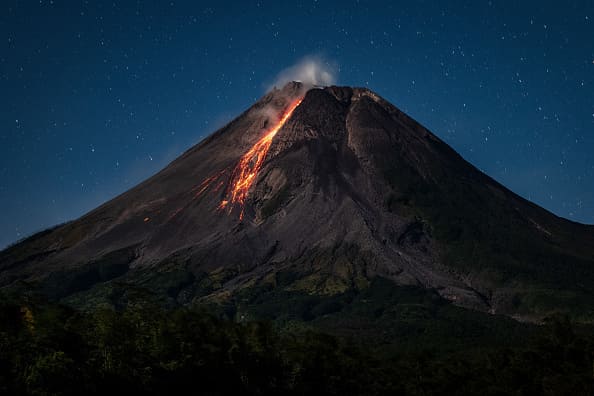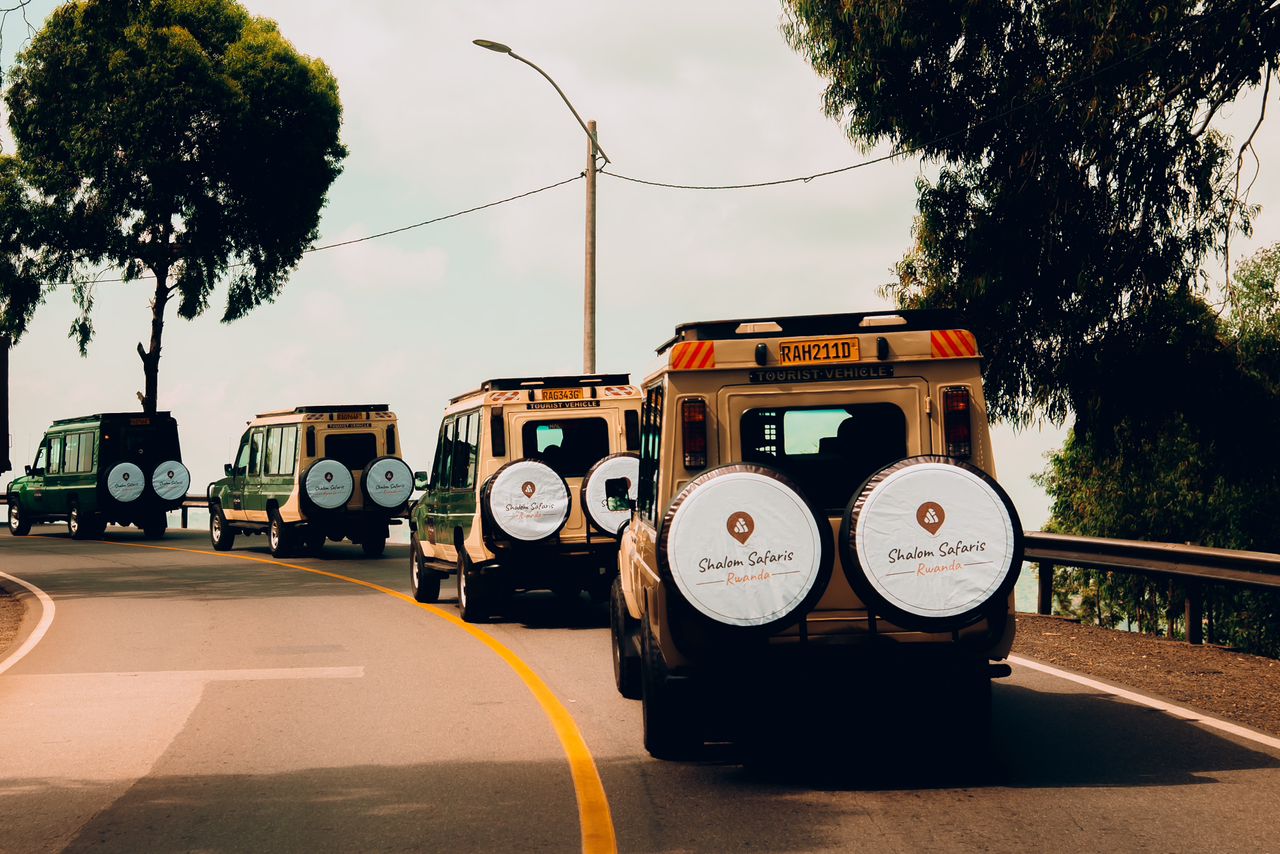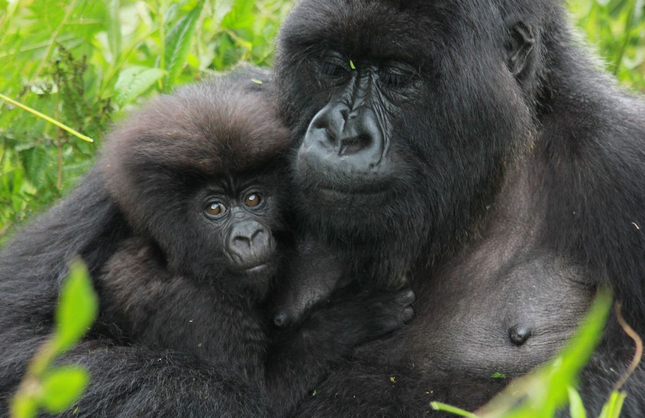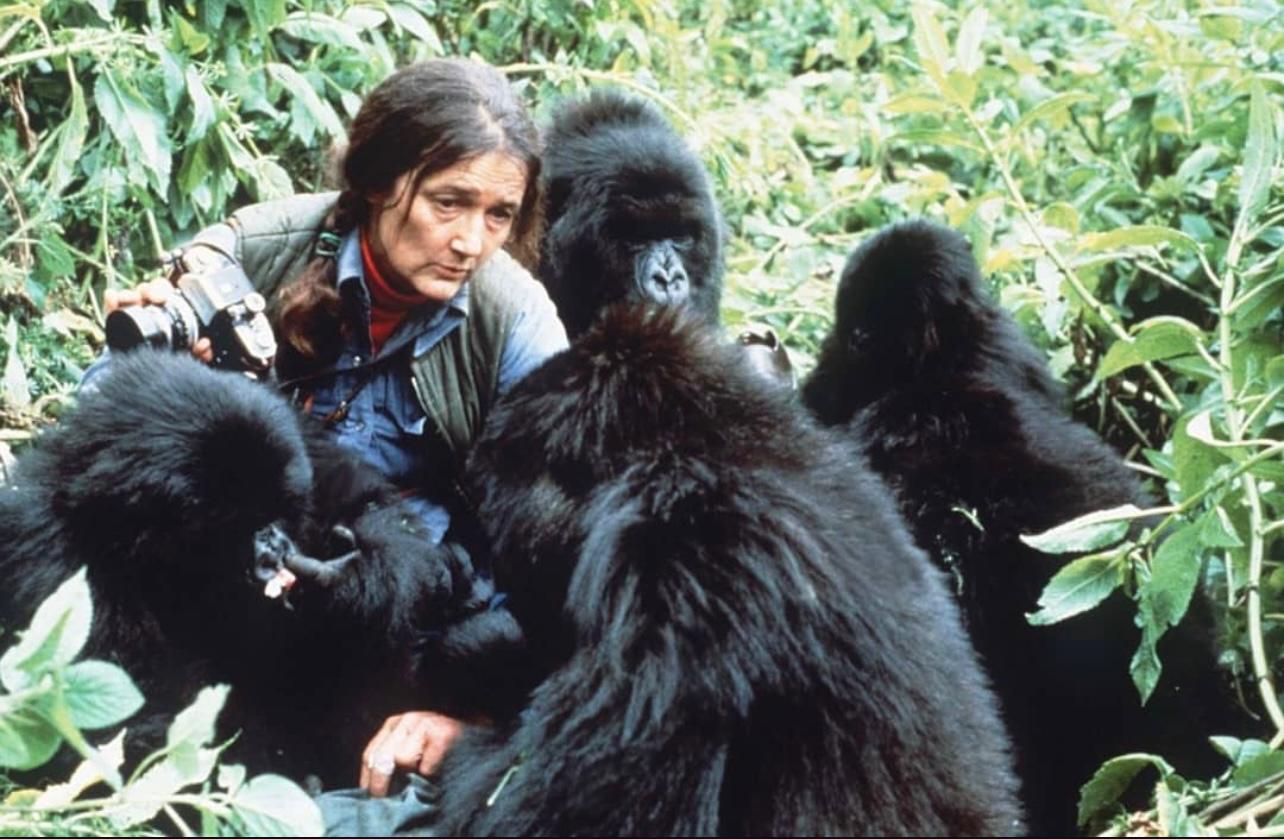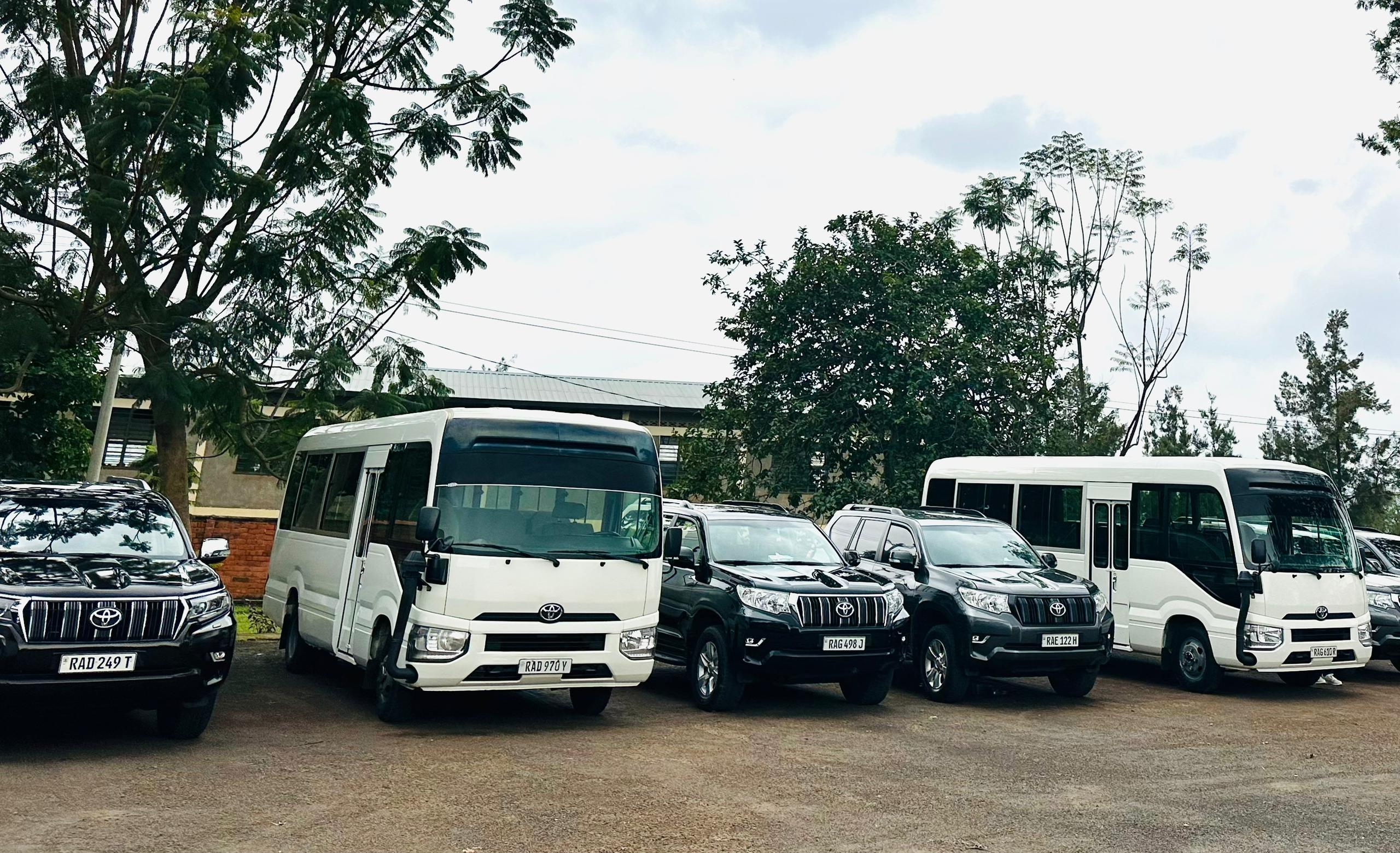Welcome to Nyiragongo Volcano Lava
Nyiragongo, located in the Western branch of the Rift Valley near Lake Kivu and the Congolese-Rwandese border, is one of the world’s most active volcanoes. It is notorious for its lava lake and producing lateral eruptions with extremely fluid, fast-moving lava flows that repeatedly devastated areas around the volcano, such as the Goma desaster on January 2002, when a lava flow destroyed much of the city’s commercial center and promted 200,000 people to flee.
The large lava lake contained in its deep summit crater, now active again, became famous in the 1960’s and 70’s when volcanologists such as the Kraffts and Tazieff studied it. It had been active for half a century before it drained in one of the volcano’s recent most catastrophic eruptions in 1977: through openings in its outer flanks in 1977, a huge lava flow poured out and killed hundreds of people. A similar event happened again in January 2002, when lava flows from flank vents drained the lake and cut through Goma, reaching Lake Kivu.
In contrast to its neighbor volcano, Nyamuragira,- a typical, and very active shield volcano comparable with Mauna Loa,- the 3470-m-high Nyiragongo displays the steep slopes of a stratovolcano. Terraces inside the steep-walled, 1.2-km-wide summit crater mark levels of former lava lakes, which have been observed since the late-19th century.
Two older volcanoes, Baruta and Shaheru, are partially overlapped by Nyiragongo on the north and south and look like lateral cones. About 100 parasitic cones are located primarily along radial fissures south of Shaheru, east of the summit, and along a NE-SW zone extending as far as Lake Kivu. Many cones are buried by voluminous lava flows that extend long distances down the flanks of the volcano.
How to reach Mount Nyiragongo
Mount Nyirangogo can be reached from several areas but for security reasons, it is safer through Gisenyi town in Rwanda. From Gisenyi, visitors will be driven for 20 km to the border between Rwanda and DR Congo before crossing to Goma. From Goma town, a great black cloud is visible which is a reminder of the volcanoes last eruption in 2002. The lava that once flowed at great temperatures has now cooled to leave a black rock. After Goma, you will be driven to the head trail at Kibati village. You will be briefed on what to expect before starting your Mount Nyiragongo volcano hike. The briefing covers all important aspects of hiking the Nyiragongo Volcano and includes what to expects, the stopping points and what to pack. Hikers will need to move as a group for most of the activity except for the final part of the hike.
Climbing Mount Nyiragongo
Climbing mount Nyiragongo can be very challenging for those who are ill prepared and not good shape. One needs to be ready to deal with the steep slopes and rugged terrain. There are porters at the starting pointing in Kibati Ranger post who can be hired for a fee to help with carrying heavy stuff. After the briefing at 9 am and assembling as a team together with the cooks and other hikers.
There are five segments when climbing mount Nyiragongo. The first part of the hike involves climbing through areas at lower altitude. Those who are not mentally or physically prepared usually quit at this point. After the first major stop, the altitude increases presenting more challenges. In this second part of the hike, one has to deal with small loose lava rocks. Those who have proper hiking boots should pass through this section with ease.
After completing the second part, hikers have to now deal with not only the small loose rocks but slippery stones and the difficult conditions of higher altitude. By the time you reach the fourth segment, the mountain slopes gets steeper and steeper with greater cold due to high altitude. Apart from the cold, its common to find rains at this section – Warm clothes and rain jackets will be required. The final part is the steepest but also shortest. The cabins can be sighted from this point and that is enough motivation for even the most tired hiker. Hikers who manage to reach this section are allowed to complete the rest of the hike at their own comfortable pace.
Overnight on top of the Nyiragongo volcano cabins
12 summit cabins are provided at the top of the volcano each comprising of 2 single beds where hikers can put their sleeping bags. The cabins have a mattress and pillow. While at the cabin hikers are provided with snacks, breakfast, dinner, water and sleeping bags. The mountain top can be freezing cold with strong winds . You need to be to go prepared with warm clothing. The cooks and porters will help prepare hot tea and coffee to help relieve hikers from the cold. The cost of an overnight at the summit is included on the permit fee. From the cabins you can smell the boiling and bubbling lava.
Getting Down
After marveling at the boiling lava lake and magma, it is time to descend. Descending is much faster and it takes about three hours hours to reach the starting point. However it is not as easy at it seems. Climbing down through sharp rocks and steep sections can be very challenging and one needs to be cautious so not to be hurt by the sharp rocks. The great thing about descending is that you have a sustained view of the great Virunga National Park and distant Volcanoes including the Rwenzori Mountains in Uganda and Lake Kivu.
The cost and requirements for getting a Congo Visa
Nyiragongo hiking permits can be obtained from the Virunga National Park directly or through a Tour operator at a cost of $300. Once bought, Nyiragongo Hiking permits do not attract a refund. You need to first secure the hiking permit before applying for a Congo Visa. A single Congo tourist entry visa costs $105 per person. This single entry visa is valid for 14 days from the day of entry.
A part from the VISA, you need to have other documentation with you to cross the Congo border from Rwanda. A Valid passport is a must as is a yellow fever vaccination card. A good tour company should help you acquire the VISA as well as arranging for transportation, accommodation and porters.
Packing List for hiking mount Nyiragongo
A rain jacket: This should be light so as not to inconvenience you while climbing the mountain. The rain jacket will help shield you from the heavy rains.
Suitable hiking boots: The shoes should have a good grip (rubber soles), water proof, comfortable and able to keep your feet warm.
Warm clothes and sleeping bag: The mountain gets colder as one ascends higher and you need to be prepared in the best possible way. Go with warm clothing to stop protect you from the freezing cold at the summit. You will need a sweater, rain resistant pants, jacket, long underwear, warm socks and hat.
Packed lunch and Water: Climbing Mount Nyiragongo can be very tiring leaving you thirsty and even hungry. Carry along packed lunch and enough drinking water
Hire a porter: Hiring a porter at the base of the volcano costs about $15 per day. These porters are used to climbing the volcano several times a week and have no difficulty helping with heavy luggage. They will also help you climb the most difficult parts of the mountain.
A hat and sunscreen: These will come in handy when there are heavy downpours or during the hot/dry season.
Camera and Binoculars: You cannot go for such a great experience without a good camera or photos to show of your time at the volcano. Watching a live Volcano is an experience only few ever get in their lifetime. You need good photos for your record and to also show off to friends and family. A binoculars will enable you spot amazing scenery particularly while climbing down the mountain.
Backpack: This is where you would be keeping all your gadgets – phones, ipads, camera, binoculars and more. Ensure that it is rainproof.
Portable charger: This will ensure that your ipads, Laptops, phones are powered while in your cabin at the summit.
A Torch: The summit has no electricity. Power is got from solar but is not available everywhere. You will need a torch to move about to the kitchen or bathrooms.
Important Information About Climbing Mount Nyiragongo
The best time to Hike Mount Nyiragongo: Hiking mount Nyiragongo can be done throughout the year but dry season is preferred by tourists. The dry season fall between June and September and also December, January and February. The rainy seasons cause the the trails to be more slippery and difficult for hikers.
Be in Good Shape: Climbing mount Nyiragongo is challenging and requires one to be fit. The mountain becomes steeper as one ascends while climbing down has its own challenges – Knee and ankle pain because of pressure. The weather conditions get more challenging as one ascends the mountains. You need to take that into consideration especially if you are sensitive to extreme weather changes.
Mental Preparedness: This is key because it is not all about being fit. You need to be determined to complete the hike despite all the challenges you may face. One can prepare the mind and body weeks before the hike by going for minor hikes on rocks or hills around your home.
Use a stick for hiking: A hiking stick will help you climb up and down steep slopes by helping you maintain balance and relive the knees from greater strain. Climbing sticks are available at the starting point.
Keep your valuable safe: Always keep your valuables like cameras, money and laptops close to you even while at the cabins with fellow hikers.
A yellow fever vaccination card is important: To cross the border to Congo, you will be required to show your passport and yellow fever card. Without the card, you may not be allowed entry to Congo.
N.B: Hiking the Nyiragongo Volcano can be combined with gorilla trekking in Congo for a more complete and memorable experience.

